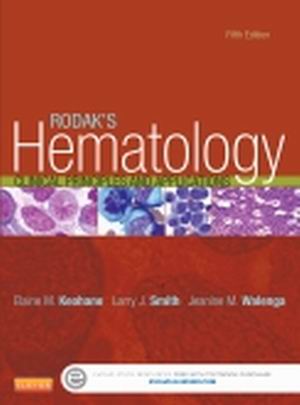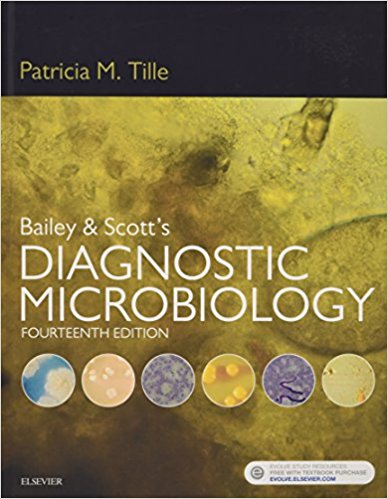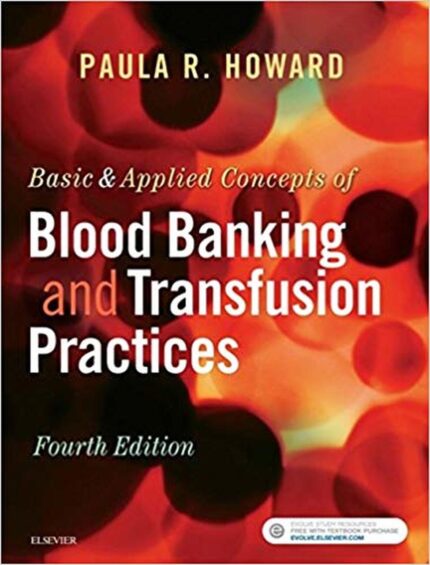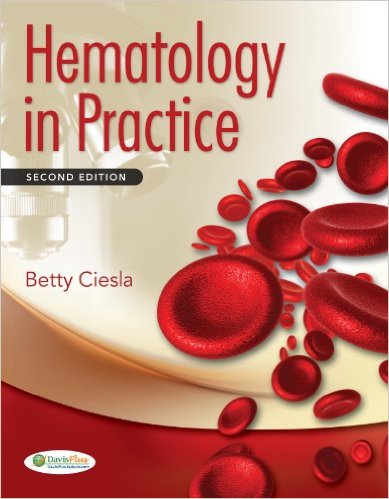Test Bank Rodak’s Hematology 5th Edition By Elaine Keohane
Chapter 01: An Overview of Clinical Laboratory Hematology
MULTIPLE CHOICE
- Hematology is the study of
- blood cells.
- serum electrolytes.
- plasma hormone levels.
- bacteria in the blood.
ANS: A
Hematology is the study of blood cells—their number, production, and morphology. Plasma and serum electrolytes and hormone levels are evaluated in various subdivisions of clinical chemistry, and bacteria are evaluated in clinical microbiology.
DIF: Cognitive Level: 1 REF: Page 1
- The morphology of blood cells is important to evaluate
- every time a complete blood count (CBC) is requested on a patient.
- when an instrument-generated flag is obtained.
- when flag limits established by medical laboratory scientists in the laboratory are exceeded.
- when the white count is elevated.
ANS: C
Every laboratory must determine—based on its instrumentation, needs of the clinician and other parameter flags that alert the medical laboratory scientist to the necessity for further evaluation— when it is necessary to evaluate cell morphology. Many instrument-generated flags, although useful, may not require review. If an automated CBC does not suggest the need, no reason exists to evaluate the blood film, even if the white count is elevated.
DIF: Cognitive Level: 2 REF: pages 4-5
- Who is ultimately responsible for determining the specimen integrity before analysis?
- medical laboratory professional
- nursing staff
- phlebotomist
- specimen-processing personnel
ANS: A
The medical laboratory scientist is responsible for ensuring the integrity of a specimen before analysis. Only he or she can judge whether the specimen is acceptable so that valid results can be obtained. Acceptable criteria include such things as type of specimen for the test ordered (e.g., blood, serum, urine); appropriate additive present (if needed) and amount of specimen relative to the additive; time interval since obtained; and presence or absence of hemolysis, lipemia, and other similar conditions. None of the other personnel named have the education and understanding to fully make that judgment.
DIF: Cognitive Level: 2 REF: Page 5
- Hematocrit is also called
- white cell count.
- bone marrow examination.
- red blood cell (RBC) count.
- packed red cell volume.
ANS: D
Historically the hematocrit was determined by centrifuging an aliquot of anticoagulated whole blood under specified conditions (e.g., centrifugal force, capillary tube length, and bore diameter) and then determining the ratio of the space occupied by the packed red cells compared with that of the entire blood volume in the capillary tube, often expressed as a percentage. Hence, it is also called the packed red cell volume.
DIF: Cognitive Level: 1 REF: page 2
- The primary function of platelets is to
- defend the body against bacterial invasion.
- carry oxygen to tissues.
- facilitate blood clotting.
- regulate acid-base balance.
ANS: C
Whenever disruption occurs to a blood vessel so that bleeding results, platelets respond initially to stop the bleeding in small vessels; they also play an integral role in facilitating the formation of a blood clot. White cells defend against bacterial invasion; red cells (i.e., hemoglobin) carry oxygen to tissues; and a complex interaction of plasma electrolytes, proteins, and carbon dioxide participates in acid-base balance.
DIF: Cognitive Level: 1 REF: page 4
- Which of the following can be evaluated only through the microscopic examination of a stained blood film?
- white blood cell (WBC) count
- reticulocyte count
- hemoglobin concentration
- presence or absence of cytoplasmic inclusions
ANS: D
Making and staining a blood film and then placing it under a microscope allow the medical laboratory scientist to evaluate the morphology of blood cells and examine them for the presence or absence of blood cell inclusions. These inclusions are important for cell identification and, when abnormal inclusions are present, sometimes provide “clues” as to the cause of disease. All the other parameters mentioned are or can be performed using an automated hematology instrument, including reticulocyte counting.
DIF: Cognitive Level: 2 REF: page 2 | page 5
- Upon centrifugation of a blood specimen, the layer between the red blood cells and plasma is called the
- hematocrit.
- buffy coat.
- serum.
- platelet pellet.
ANS: B
When blood is centrifuged, the layer between the red cells and plasma is called the buffy coat. This layer consists of both white blood cells and platelets. The hematocrit is the packed cell volume that reflects the number of red blood cells. The serum is the liquid portion of the blood formed from a clotted blood sample. The platelet pellet is a special layer of platelets that is required for platelet function studies. This layer of platelets is prepared from a whole blood specimen using specific centrifugation time and speed.
DIF: Cognitive Level: 1 REF: Page 2
- Select the term that describes a low white blood cell count.
- leukopenia
- leukocytosis
- neutropenia
- leukemia
ANS: A
The term leukopenia refers to a low total white blood cell count. Leukocytosis is a term that describes an increase in white blood cell count. Neutropenia is a low cell count that is specific to the neutrophils. Leukemia is cancer of the blood cells, most often white blood cells.




